Stir in a little pinch of truth, popular tradition, a significant amount of imagination and there you have it - myths and legends. The legends of any culture or country are always fascinating, and those in Italy are no different. Hidden between the folds of villages, mountains, rivers and seemingly normal streets in Italy are endless legends that the natives believe in. To them, they are explanations for unusual events, diseases or phenomena that cannot be explained in any other way.
Lupo Mannaro
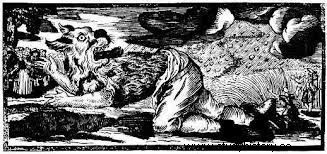
Long before werewolves became a fascination with modern culture, the Italians had stories of those floating around. In ancient texts, they were described as either wolves behaving like humans or humans who could change the skin. The Italians themselves were not sure whether the creature was originally a human or an animal. In Italy, these werewolves were called Lupo Mannaro. In ancient times, they were believed to live among humans and transform into a fearsome creature during nights with full moons.
The Italians believed that the night of December 25 was a prime night for werewolves. According to many, these men were cursed by the church for roaming the earth in their animal form. According to a legend, a priest was attacked by a werewolf in Ragusa. The terrified priest leaned over to stab the animal with the wooden crucifix. The bleeding turned the werewolf back into a human who continued to thank the priest for breaking a curse that was thrown at him as a child. According to the curse, the man turned into a werewolf night to full moon until dawn, until the priest broke the curse. In Sicily, the natives believe that Lupo Mannaro can not climb more than three steps, so finding a long flight of stairs to run up to and escape would save lives.
Just as the legends of Lupo Mannaro varied, so were various methods believed to cure a man afflicted by the curse. One method says that when a human was about to turn into a werewolf, he had to be kept in a cold bath. According to another, throwing metal keys at him would stop the transformation. Other extreme methods include shooting the werewolf with silver bullets or a crossbow with silver-tipped arrows.
Lariosauro

Meet Lariosauro, Italy's own Loch Ness monster. According to Italian folklore, Lariosauro lives in Lake Como, which is 30 km north of Milan and is one of the deepest European lakes. In November 1946, two hunters claimed to have seen a huge animal resembling a reptile swimming in the lake. It had red shells and was about twelve feet long. After firing his rifle, Italy's Nessie disappeared into the center of the lake with a hissing sound. The creature was named after Lariosaurus balsami, a prehistoric reptile whose fossilized remains were discovered in the lake in 1830.
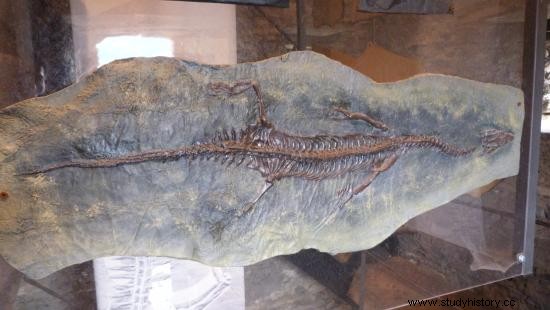
Several observations followed at the lake. In 1954, a father and son discovered a creature with a round snout and paws with swimming skin. Then, in August 1957, another monster was allegedly seen by natives. One month later that year, an animal was discovered in the lake, this time whose head resembled a crocodile. The last sighting was in 2003, and it looked more like a giant eel. Giorgio Castiglioni, a skeptical scientist, attributes the observations to more rational explanations - in 1954 Nessie was an otter, in 1957 just a bluff, and in 2003 only a group of innocent fish swimming together.
Befana
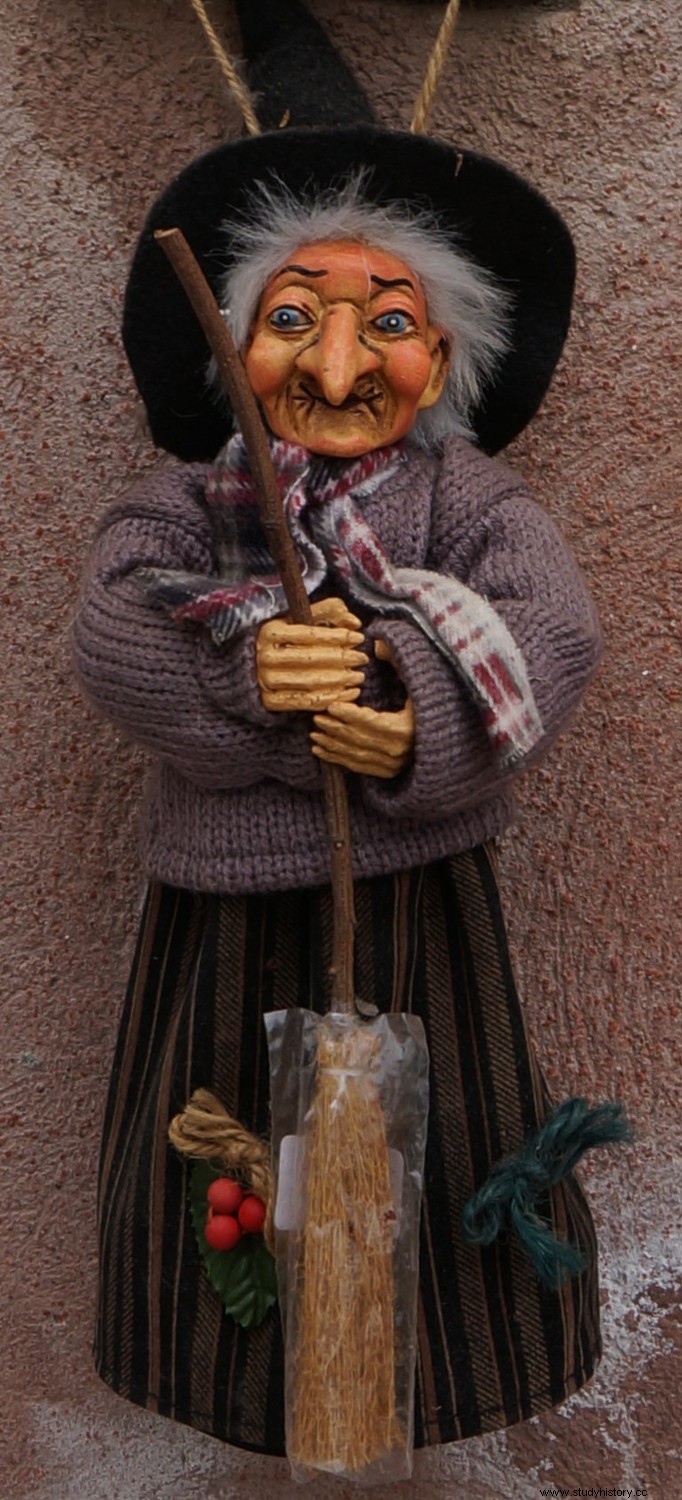
One of the oldest and most famous legends in Italy, Befana is Italy's own Santa Claus. At least that is what some Italians think. Some say she is a good witch and for others she is a spinster. The church was not so pleased with the myth, so they fabricated their own version of it - they claimed she was the devil's spawner. Befana shows up the night of January 6 and leaves gifts for children who have had a good time. As for those who have been naughty, they get nothing but a piece of coal. For Italians, the day is an important day as it marks the end of the Christmas season. Befana is described as an old woman or woman riding a broomstick through the air, wrapped in a black shawl, and when she enters each home through the chimney, she is usually covered in soot. A bag of gifts and candy for the children was thrown over her shoulder.
So how did this legend come to be in Italy? According to legend, the three wise men were looking for the Christ child when they decided to ask for directions in a small house. Their knock on the door led to an old woman holding a broom to open the door. For the woman, there were three colorfully dressed men on her doorstep asking for the way to the Christ child. The woman had no idea what the men were talking about and could not help them with the task. Before the men left, they kindly asked the woman to help them on the journey, only to say no to the offer, saying that she had a lot of housework to do. As is often the case, after they left, the woman felt she had made a mistake and set off in search of the men. Hours of searching showed nothing, and instead the woman stopped every child she met on the street and handed out treats to them, hoping that one of them was the Christ child. And every year, on the eve of Holy Trinity, Befana sets out to look for the Christ child, leaving treats for the good ones and lumps of coal for the bad ones.
Dahu
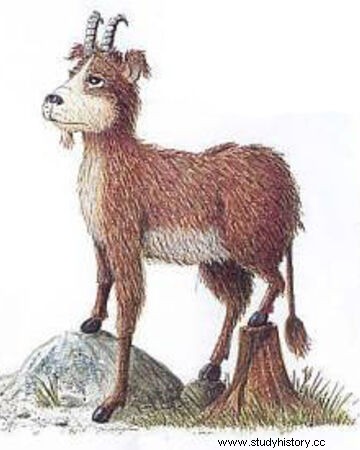
Floating around northern Italy is the story of Dahu, the legendary goat whose legs measure different lengths. Legend has it that the Dahu is an animal similar to the mountain goat, but with legs of different lengths so that it can walk properly in the uneven mountain terrain. Like its various legs, there are also different legends. According to one, the natives call it laevogyrous dahu or hunndahu (has shorter legs on the left side and walks around the slope counterclockwise), while another is the male goat or dextrogyre dahu (has shorter legs). on the right side and goes clockwise). The different legs and directions of both goats allow them to find their mates. In addition, the testicles of the male dahua drag along the ground, leaving a subsequent scent so that the female dahua can easily find it. The males use the scent to find other males, which leads to a struggle to assert dominance.
The myth of dahu started as more of a prank. Pranksters claim that in order to catch a dahu, two people must be involved - one who is waiting at the foot of the mountain with a bag and the other who must be good at imitating dahu sounds. Standing behind the goat and mimicking the sound causes the animal to be startled, lose its balance and roll down the hill, right in the rucksack that the other person is holding. Another method of catching dahu is to grind pepper in the area the animal is grazing. It sniffs at pepper, sneezes and strikes a rock and loses consciousness. Not surprisingly, no one has yet caught a dahu.
Evil eye
In Italy, the evil eye is called Malocchio. Belief in Malocchio prevents the Italian people from sharing good news with others whose envy or jealousy can bring you bad luck. They also do not share important events such as exams or interviews for fear that someone will cast the ugly evil eye on them. The Italians believe that one way to keep away such bad luck is to wear red, even just red underwear! Other ways include wearing the Italian horn or Cornuto and the hand horn or Mano Carnuto. Cornuto is a pendant in the shape of a chili pepper worn on a necklace. The pendant can be either coral or gold and is believed to be sacred to the moon goddess. Mano Corunto should shape one's hand into a fist with the index finger and the index finger stretched outwards, so that they look like horns. Another way to ward off evil is to touch something made of iron. You can see the horn amulets hanging from cars, windows or doors to shops and homes in Italy.
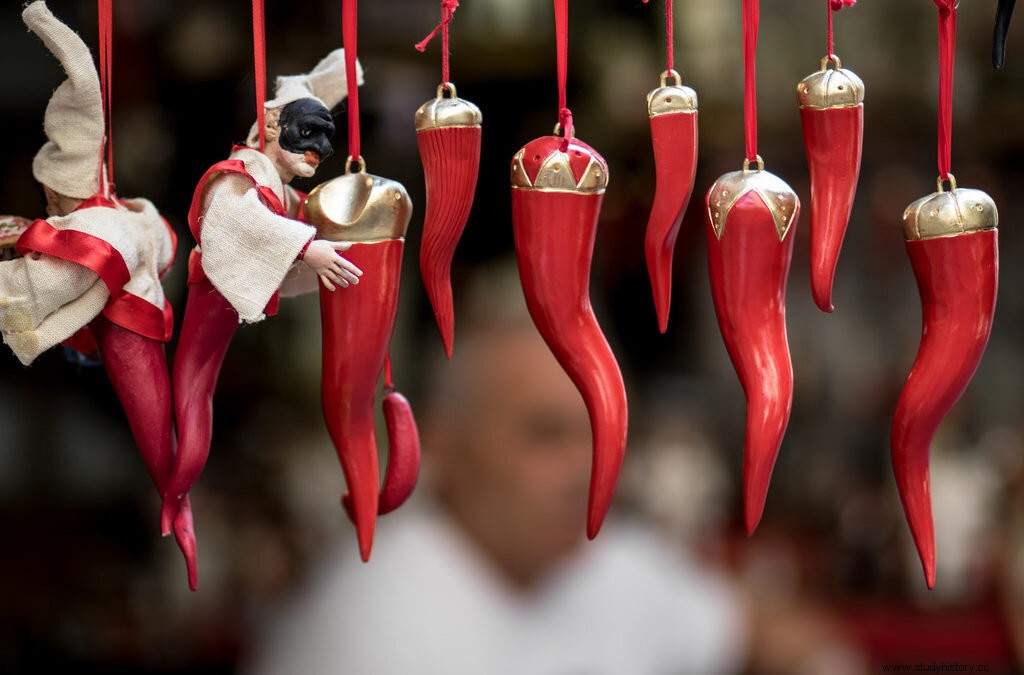

The Italians believe that boasting of a good thing can even cause the immortal gods to become jealous of the joy, and thus invite destruction upon them. When a baby is born, many Italians refrain from saying that the baby is beautiful for fear of inviting Malocchio.
Badalisc
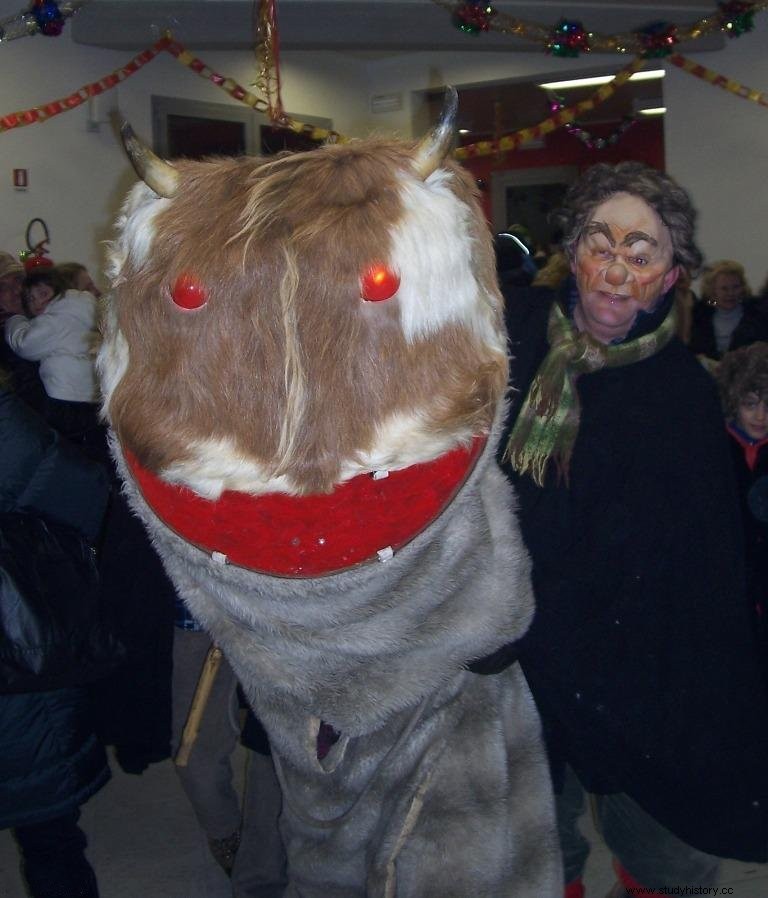
Badalisc, also known as Badalisk, is a legendary creature from Val Camonica in Italy. It is described as a creature with a huge head covered with the skin of a goat, a huge mouth, glowing eyes and two small horns. Italians believe that Badalisc lives in the forest around the village of Andrista and plagues the villagers. So every year the villagers catch it under Holy Trinity and lead it into the village. The group consists of musicians and masked characters, such as il giovane or the young man, il vecchio or the old man, la vecchia or the old woman, and the bait used to catch the animal, the young signorina. Then there are old witches who hit drums, humpbacks or un torvo gobetto who fight a duel with the beast and bearded shepherds. When the group arrives at the village square, Badalisc's speech is read. The speech includes the creature that gossips about the village - the villagers' sins and plans. The badalisc is said to be stupid, so an interpreter reads the speech. After the speech comes singing, dancing, general fun and partying. Towards the end of the day, participants eat Badalisc polenta (a traditional food.) Badaliscen always has a place of honor during the holidays. The next day, after an exhibition, the creature is set free and allowed to return to the forest for the next Holy Trinity.
Traditionally, only men participate in the procession. In ancient times, women were forbidden to participate in exhibitions or even to watch or listen to Badalischen's speech.
Wear Thyrus
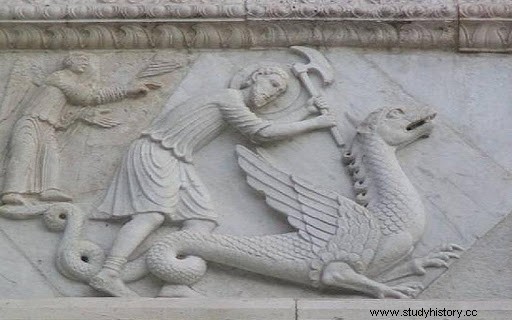
One of the most popular legends in Italy is the one about the dragon Thyrus, who besieged Terni in the Middle Ages. Thyrus was a winged water dragon or snake that lived in the marshes near Terni. The inhabitants or someone who passed through the area became ill and died because of Thyrus' evil spirit. The people lived in fear of the dragon until the Elderly Council decided to enter. They decide to find a solution and save Terni and the villagers. They called the country's bravest men to the town hall to fight and kill Thyrus, but no one was willing to take the risk. Only one man from the noble Cittadini house advanced and he, armed as a knight, set out on the mission. A fierce battle with Thyrus brought its downfall. After receiving the news that they were now safe from the dragon, the villagers themselves went to see the scene of the battle. The celebration lasted for many days. The brave man was hailed as a hero and rewarded with the land that Thyrus had terrorized. To commemorate the day, the Board of Elders placed Thyrus in the city's coat of arms along with an inscription in Latin:'Thyrus et amnis dederunt signa Teramnis', which means 'Thyrus and the river gave their characteristics to Terni'.
Legends often stand as metaphors for real events or facts, and the legend of Thyrus can be one. The death caused by the dragon could account for the countless number of natives who died due to malaria, which was once violent in Terni's swampy areas. The hero who killed Thyrus represents the boycott of the land to fight such epidemics.
Seven-headed dragon of Cerenzia
Among the many villages on the southernmost peninsula in Italy that house legends and myths, the ancient village of Cerenzia is one. The village had about seven thousand inhabitants, a bishopric (whose remains are still present) and nine churches. Cerenzia is associated with a legend from the sixteenth century that to this day has significance for the inhabitants.
November 9 th , 1528, the natives of Cerenzia stood in line at the village fountain for their daily ration of water. Out of nowhere a dragon with seven heads appears and spits fire. The villagers turned to the bishop for help, who said that the dragon would devour a Christian every day for a year and no ordinary man could defeat it. The only person who could do that was San Teodoro d'Amasea, who could kill any fearsome animal with a single sword blow. And so San Teodoro was approached by the villagers, who agreed to save Cerenzia's natives. The natives, led by the bishop, lured the dragon from the resting place, only for San Teodoro to blind it and thus kill it. The villagers, out of gratitude, chose San Teodoro as the country's protector, and today, November 9, is a day of celebration for the natives in memory of their hero. In a church dedicated to San Teodoro, a painting depicting San Teodoro with the seven tongues of a dragon on his head hangs to this day.
Why legends are relevant today ?
Myths and legends are more a window to an individual's cultural soul. These ancient stories form a connection to the origin and sense of identity of a culture. Like clothing, food, architecture and language, stories link a culture to its past, reflecting a journey that has been going on for centuries. Some of the stories also give us an insight into lost cultures and traditions.
We still read myths and legends today as they tell universal and timeless topics that are relevant, regardless of age or culture. In ancient myths, knights in armor may have killed dragons and saved entire villages. Today, the same themes can be seen in modern novels and movies. An ordinary citizen with bravery undertakes to fight against anything that threatens his city or country. Throughout the story, the main character must think deeply and creatively in order to fight and defeat evil. In the end, good wins over evil, which is what each of us wants for this world.
